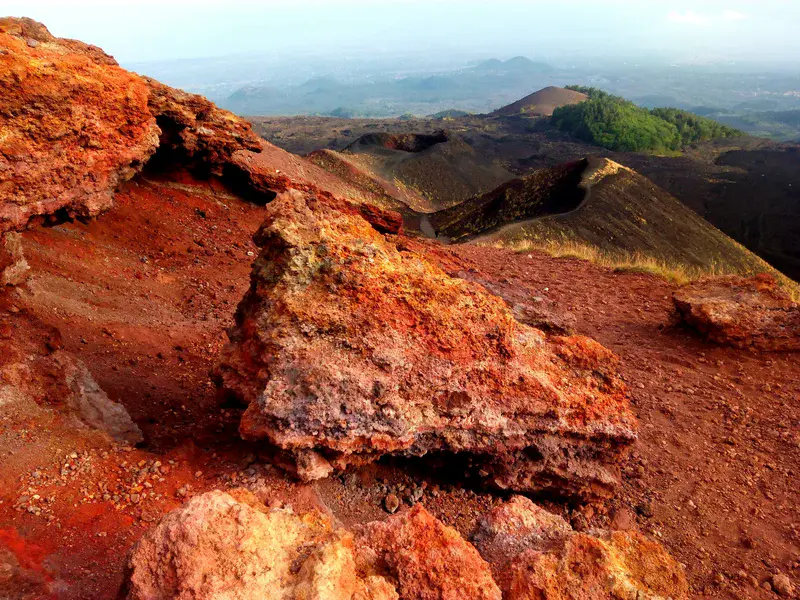
Mount Etna
by Alicia Morugán, Miguel Hernández University, Elche, Spain
The soil is volcanic and very rich in minerals. It is formed by the disintegration of one or several types of lava of different ages and eruptive materials such as lava, ash and sand. Volcanic rocks make some of the best soils on earth because they not only have a wide variety of common elements the rock and are readily chemically separated into elemental components. In the Etna region there are substantial differences in climate, not only compared to the rest of Sicily, but also from one area of the volcano to another. This is due to the fact that Etna region has semi-circular shape, spread from north to south-west. This characteristic allows for different environments to be formed each with its own microclimate, benefiting from different exposure and different level of proximity to the sea. Altitude in the Etna region varies between 450m asl and 1100m asl. This factor is the main reason for the temperature amplitudes between day and night and seasonally. A major difference compared to the rest of Sicily is in the case of precipitation. The highest levels are encountered on the east slopes of the volcano.The rain is practically absent in the summer, can also be very high during the autumn – winter period.
Featured on GeoLog, the official blog of the European Geosciences Union
Categories
- Geochemistry, Mineralogy, Petrology & Volcanology (990)
- Natural Hazards (526)
- Soil System Sciences (953)
Location
- Europe (3883)
- Southern Europe (1683)
- Italy (433)
- Exact location (14.9832 E, 37.7618 N)
Colours
Image properties
4224 × 3168 px;
image/jpeg; 3.8 MB
Camera:
Bq Aquaris E5 HD
Taken on 5
August
2015
Submitted on 23 August 2015
Licence
Creative Commons Attribution 3.0 Unported (CC BY 3.0)
Credit
Alicia Morugán (distributed via imaggeo.egu.eu)
Share
Appreciate
Report